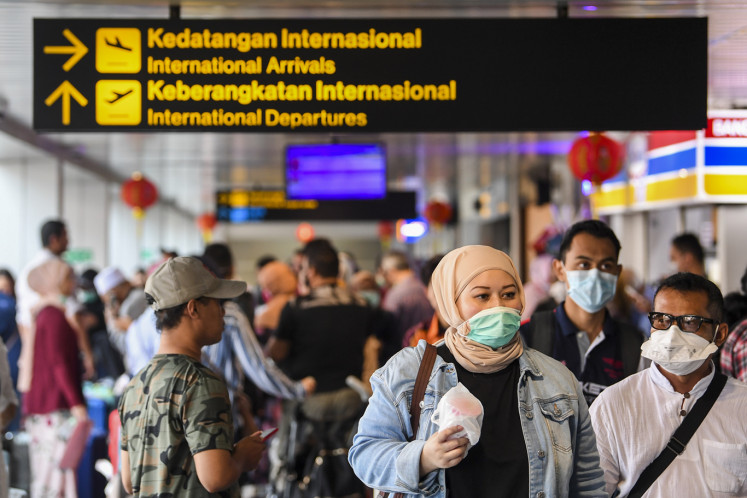Popular Reads
Top Results
Can't find what you're looking for?
View all search resultsPopular Reads
Top Results
Can't find what you're looking for?
View all search resultsRace to find Brazil Amazon species before they disappear
Change text size
Gift Premium Articles
to Anyone
 In this file photo taken on September 15, 2021 aerial view showing smoke rising from an illegal fire destroying Amazonia rainforest in Porto Velho, Rondonia state, Brazil. Deforestation in the Brazilian Amazon reached a record high in the first half of 2022, while June was the worst month for forest fires since 2007, according to official data released on July 1, 2022.
(AFP /Mauro Pimentel)
In this file photo taken on September 15, 2021 aerial view showing smoke rising from an illegal fire destroying Amazonia rainforest in Porto Velho, Rondonia state, Brazil. Deforestation in the Brazilian Amazon reached a record high in the first half of 2022, while June was the worst month for forest fires since 2007, according to official data released on July 1, 2022.
(AFP /Mauro Pimentel)
In a remote part of the Brazilian Amazon, a scientific expedition is cataloging species. Time is of the essence.
"The rate of destruction is faster than the rate of discovery," says botanist Francisco Farronay, of the National Institute of Amazonian Research (INPA), as he cuts into the bark of an enormous tree and smells its insides.
"It is a race against time."
The largest rainforest on Earth, still largely unexplored by science, is assailed by deforestation for farming, mining and illegal timber extraction.
According to a MapBiomas study last year, the Amazon lost some 74.6 million hectares of native vegetation -- an area equivalent to the entire territory of Chile -- between 1985 and 2020.
The destruction accelerated under the government of far-right President Jair Bolsonaro, accused by environmentalists of actively encouraging deforestation for economic gain.
The rainforest is considered vital to curbing climate change for its absorption of Earth-warming CO2.















